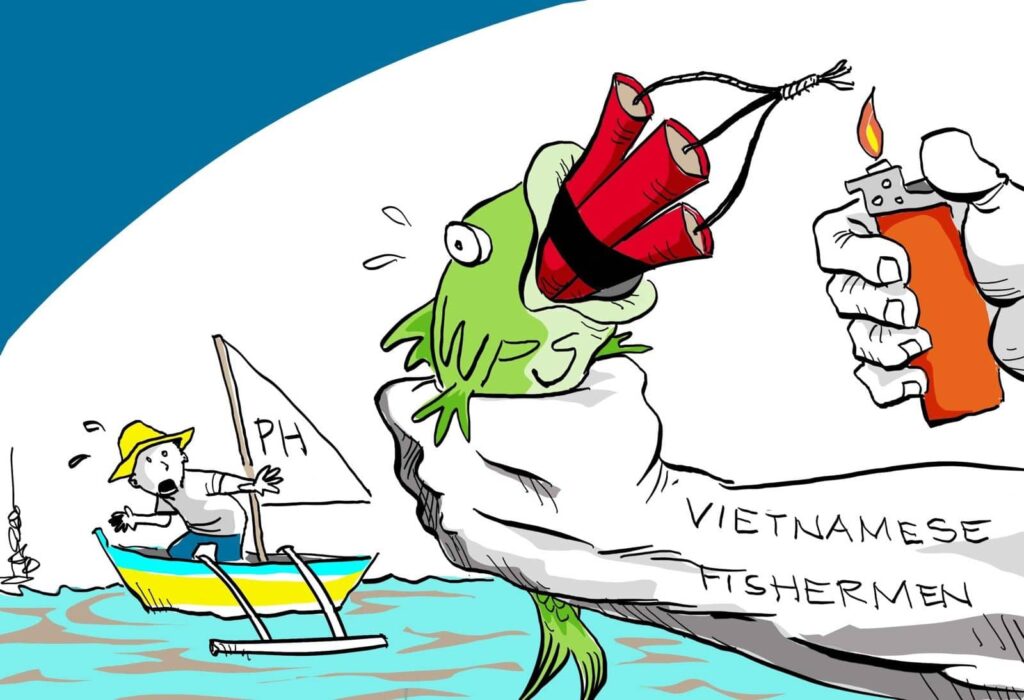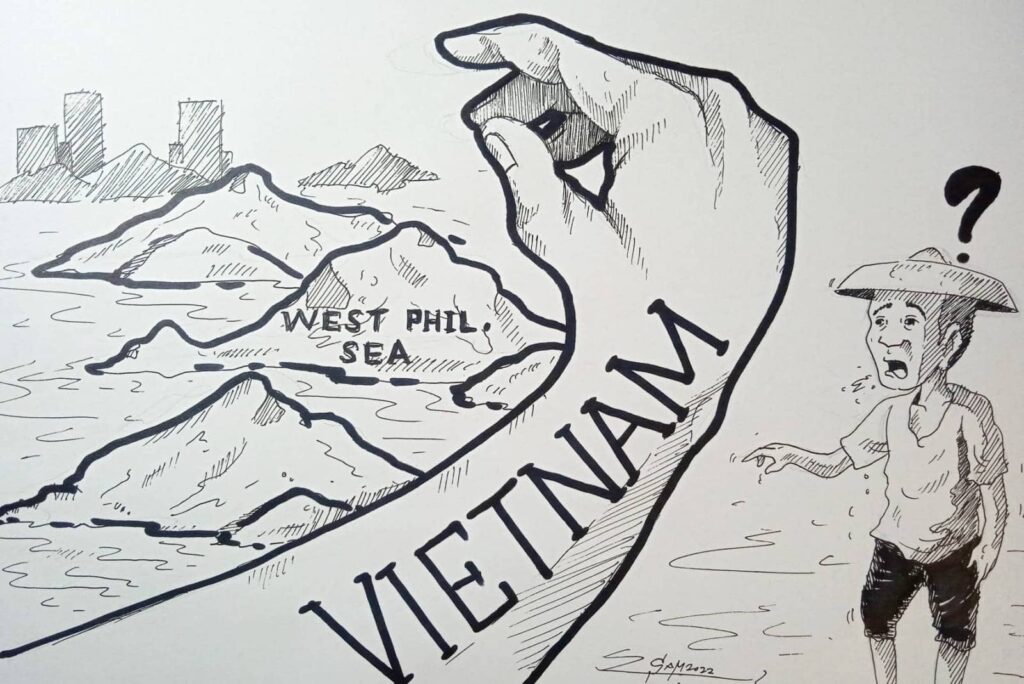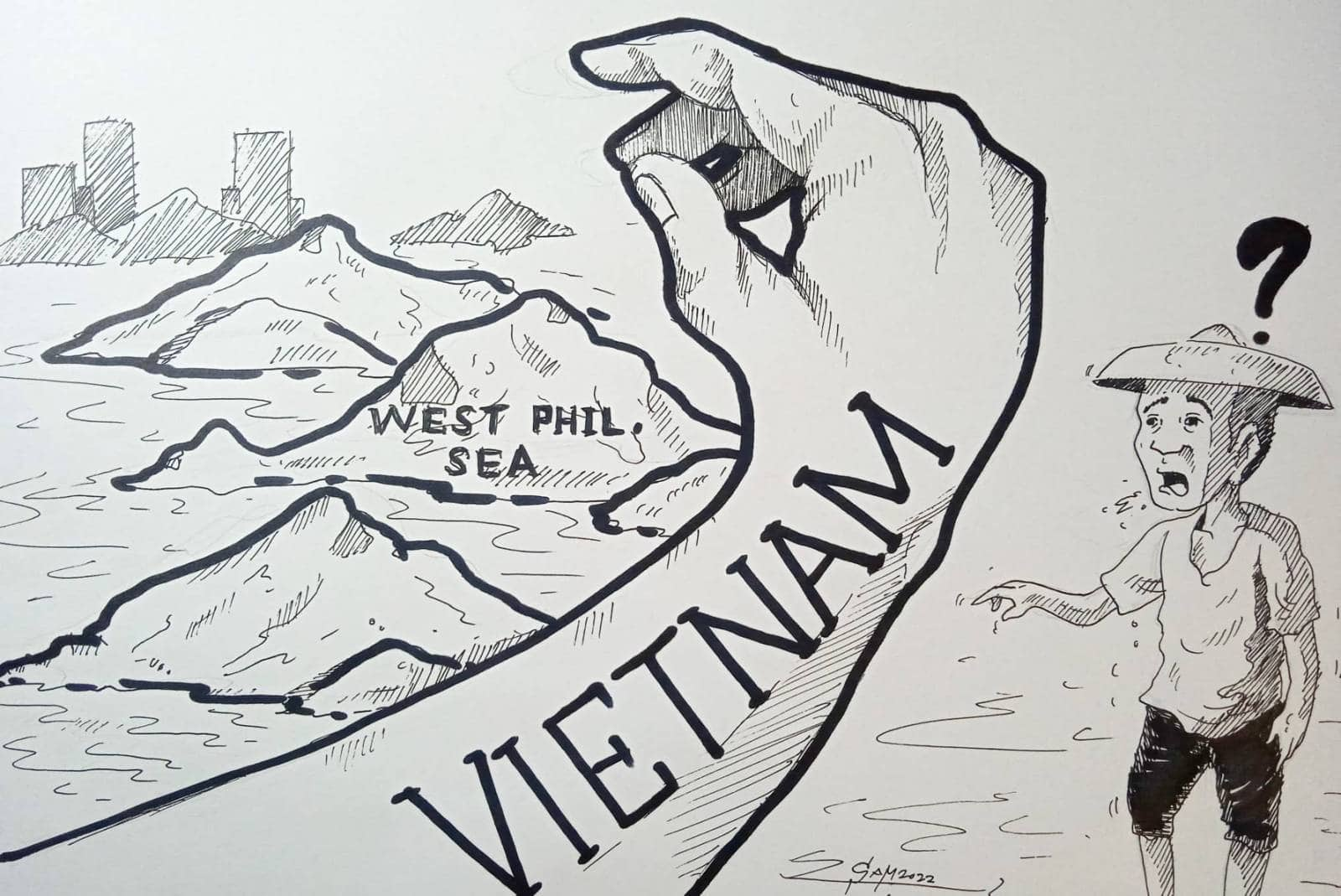Vietnam might just become the next China.
That is, when it comes to territorial disputes and claims in the West Philippine Sea. This hotspot is a heavily contested region that features heavy trade traffic between shipping and logistical lanes. Furthermore, there is some speculation that the continental shelf beneath the sea contains huge amounts of crude oil, which can bolster the economy of the nation-state that taps into them first. It is, without a doubt, a ticking time bomb that constitutes some of the ingredients for boiled territorial disputes.
The West Philippine Sea Dilemma
Indeed, border and delimitation disputes are a thing in the West Philippine Sea. The Spratly Islands itself consist of at least 56 major islands/islets. Brunei claims one, Taiwan claims two, Malaysia claims six, China claims seven, the Philippines claims 11, and Vietnam claims a staggering 29 of these features. The Spratlys are only one of the island groups in the region that’s disputed; there are also the Natunas and Paracels.
Another complication about these claims is that they’re not entirely collected in one area. These claims are randomly scattered across the West Philippine Sea, overlapping with other countries’ claims.
Therefore, it is a chaotic “bundle of mess” that doesn’t have defined boundaries that are causing the decades-long dispute in the region.

overlap with one another, delimitation treaties are created to superimpose a proper border between two countries.
This reflects the importance of delimitation agreements and/or treaties, but that is not merely the point. Vietnam’s claims in the Spratly Island Group are far from the 200-kilometer EEZ of the said country.
Therefore, they technically don’t have the backing of the United Nations with their claims in the disputed islands. Vietnam is roughly 1,400 kilometers away from the Philippines, with their claimed islands somewhere in the middle at 700 to 1,000 kilometers away from their mainland.
Vietnam’s “Historical” Claims
Since Vietnam and the Philippines are both signatories of the UNCLOS, both countries should follow the “law of the sea” rather than historical claims. Vietnam asserts its claims in both the Paracel and Spratly Islands because of historical records that prove the country’s occupation of the islands that stretch to the 17th century.
However, the Law on the Convention of the Sea states that historical claims should not be the basis anymore for formal border delimitation implementation. This is the same reason that China is trying to impose to no lawful avail.
It would seem that the dispute between Vietnam and Indonesia was not as fair as it was between the Philippines and the Republic of Indonesia.
To add to
to this case, Vietnam has a long history of aggressive expansion, going as far as occupying parts of Laos and Cambodia during and after the Vietnam War, and clashing with China when things didn’t go their way despite being friends from the start.
The Threat of Vietnam against the Philippines

And so, this highlights another threat over the horizon: will the Philippines be at odds with Vietnam? As mentioned earlier, Vietnam is currently claiming 29 features in the Spratly Group of Islands, while the Philippines only lays claim to 11 of these islands and islets. The claimed territories of Vietnam often overlap with the Philippine claims. In a nutshell, some of their claimed islands are too close for comfort to Filipino-claimed islands.
If ever there are border delimitation talks, will Vietnam play fair and square? How is there an assurance that they won’t do to the Philippines what they did with Indonesia?
The answer is UNCLOS.
However, this raises another issue: the incapacity and incapability of the United Nations to police this convention on the law of the sea. If it was properly policed, then there would be no disputes in this region. China would go back to their rightful territories and everything would be organized in neat, old-fashioned borders that are 200 nautical miles from the edge of each country’s territorial waters.
Of course, we know that’s not happening. Logically speaking, they have legitimate claims in the Paracel Islands, but not in the Spratlys.
Now, we go back to the beginning of this article; can Vietnam become the next China when itcomes to island and land grabbing in the West Philippine Sea? Possibly. However, certain factors such as the UNCLOS and the face of a greater threat in the personification of China may just unite these two ASEAN countries against a common threat, arriving at a peaceful resolution to the dispute in these islands.
Vietnam’s aggressive claims in the Spratly Islands need to stop. They claimed far too many islets outside of their Exclusive Economic Zone. Their government should give back these islets to their rightful owners according to the UNCLOS so that they may not be sanctioned and frowned upon by the international community.
Vietnam should follow the law and not become like China in terms of aggressiveness in the Spratly Group of Islands. If they do, they might just find themselves in the crosshairs of multiple ASEAN states. Indonesia’s doing enough to combat intruders into their Natuna Group of Islands, whether these are Vietnamese or Chinese boats. Perhaps a similar engagement may happen in the Spratlys, but tensions in the area may just put everyone on the brink of war, so probably not.
In the end, we can’t tell how big of a threat everyone is to each other. That’s just how geopolitics work.
As for the question if Vietnam is a threat to the Philippines: lawfully, no, but if they follow the footsteps of China, they may just find themselves toe-to-toe with stationed Filipino Marines in the Kalayaan Group of Islands. After all, the Philippines has the backing of the United Nations following its ruling against China last 2016.




